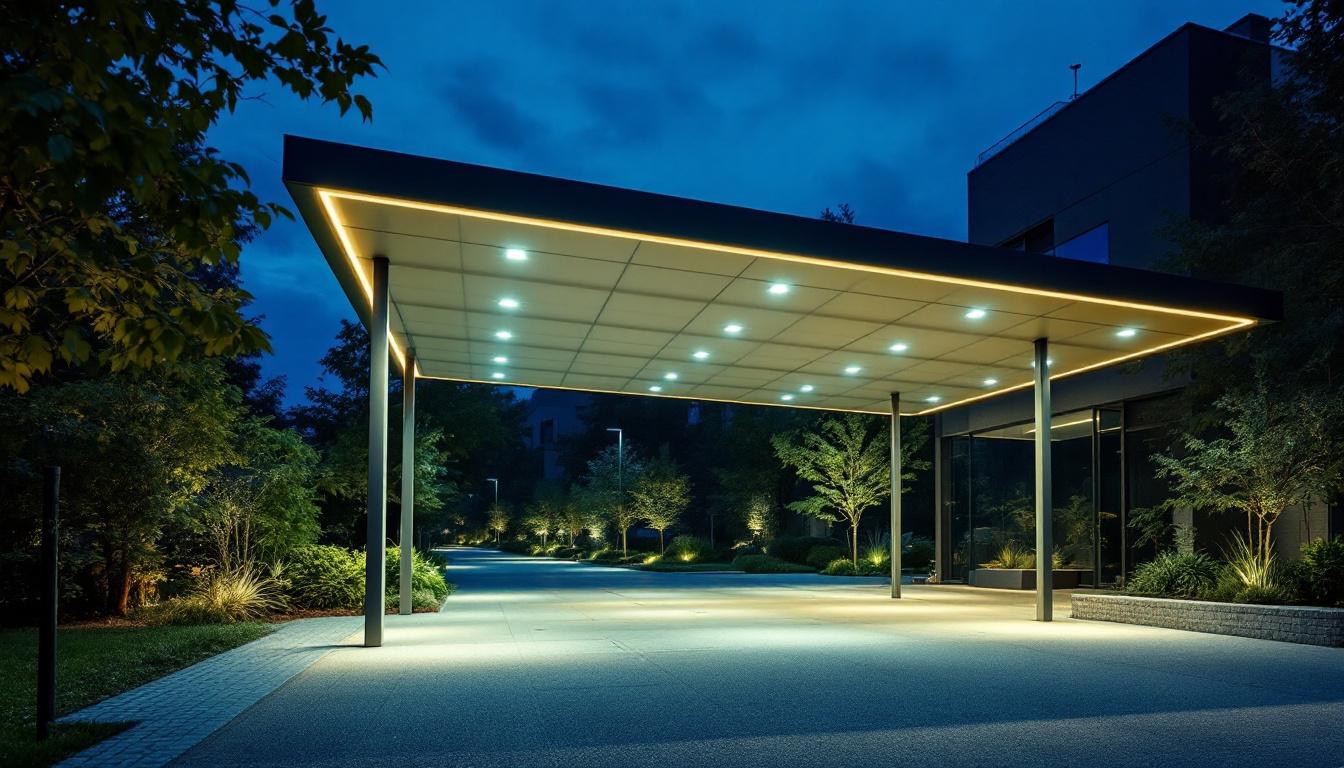
In the ever-evolving world of lighting solutions, LED technology has emerged as a frontrunner for efficiency and performance. Among the various options available, the 4-foot LED light fixtures are particularly popular in commercial and industrial settings. However, despite their advantages, there are common pitfalls that lighting contractors can encounter when working with these fixtures. This guide aims to highlight these mistakes and offer practical advice to ensure successful installations.
LED, or Light Emitting Diode, technology has revolutionized the lighting industry. Unlike traditional incandescent bulbs, LEDs convert electricity directly into light, resulting in greater energy efficiency and longer lifespans. This fundamental difference not only reduces energy costs but also minimizes maintenance needs, making LED fixtures an attractive option for contractors and clients alike. The lifespan of an LED bulb can exceed 25,000 hours, which is significantly longer than that of incandescent bulbs, which typically last around 1,000 hours. This durability translates into fewer replacements and less waste, contributing to a more sustainable approach to lighting.
When selecting 4-foot LED lights, it’s essential to understand the various types available, including troffers, strip lights, and high-bay fixtures. Each type is designed for specific applications, and choosing the right one can significantly impact the overall effectiveness of the lighting solution. For instance, troffer lights are often used in commercial spaces like offices and schools due to their ability to provide uniform light distribution, while high-bay fixtures are ideal for warehouses and industrial settings where ceilings are elevated. Additionally, the flexibility of LED strip lights allows for creative installations in residential and commercial environments, enabling designers to highlight architectural features or create ambient lighting effects.
One of the most prevalent misconceptions about LED lighting is that all products are created equal. In reality, there can be significant variations in quality, brightness, and color temperature among different brands and models. Contractors should be diligent in researching and selecting high-quality products that meet the specific needs of their projects. Factors such as lumens per watt, color rendering index (CRI), and energy efficiency ratings are crucial in determining the suitability of an LED product for a particular application. A higher CRI indicates that the light will render colors more accurately, which is particularly important in settings like art galleries or retail spaces where color perception is critical.
Another misconception is that LED lights do not require any special installation considerations. While they are generally easier to install than traditional lighting, there are still important factors to consider, such as compatibility with existing fixtures and electrical systems. Additionally, the thermal management of LEDs is vital; improper heat dissipation can lead to decreased performance and a shorter lifespan. Therefore, it is essential for contractors to ensure that the fixtures are installed in a manner that allows for adequate ventilation and cooling. Understanding these nuances can help in maximizing the benefits of LED technology and ensuring a successful lighting installation.
One of the most critical steps in any lighting project is thorough planning. Failing to assess the space adequately can lead to poor lighting distribution and inefficient energy use. Before installation, contractors should conduct a detailed lighting audit, considering factors such as room dimensions, existing light sources, and the intended use of the space.
During the planning phase, it is also important to take into account the layout of the fixtures. Proper spacing and alignment can enhance the overall aesthetic and functionality of the lighting. Contractors should avoid the temptation to rush this process, as it can lead to costly mistakes down the line. Furthermore, incorporating the principles of ambient, task, and accent lighting can create a harmonious balance that not only illuminates the space effectively but also enhances its visual appeal. For example, in a home office, a combination of overhead lighting and desk lamps can provide both general illumination and focused light for work tasks, thereby improving productivity.
Another common mistake is overlooking the electrical compatibility of LED fixtures with existing systems. Many contractors may assume that all LED lights can be easily integrated into current wiring setups. However, this is not always the case. It is crucial to verify voltage requirements, dimming capabilities, and any necessary modifications to the electrical infrastructure.
Additionally, using incompatible fixtures can lead to flickering, reduced lifespan, or even complete failure of the lights. Therefore, a thorough understanding of the electrical specifications of both the LED fixtures and the existing wiring is essential for a successful installation. Moreover, it is advisable to consult with an electrician who specializes in lighting to ensure that all components are compatible. This proactive approach can prevent not only technical issues but also safety hazards, as improper installations can lead to electrical shorts or fire risks. Keeping abreast of the latest advancements in lighting technology can also inform choices, as newer fixtures may offer enhanced compatibility features that simplify integration with older systems.
When selecting LED fixtures, it can be tempting to prioritize cost over quality. However, this approach can lead to significant issues in the long run. Low-quality LED lights may offer initial savings but often come with reduced efficiency, shorter lifespans, and increased maintenance costs.
Investing in reputable brands known for their reliability and performance can save contractors from future headaches. Look for products that provide warranties and certifications, as these can be indicators of quality and durability.
Another critical aspect of choosing LED lights is understanding the relationship between lumens and watts. Lumens measure the brightness of a light source, while watts indicate energy consumption. Many contractors mistakenly focus solely on wattage, assuming that higher watts mean brighter lights. In reality, LEDs provide more lumens per watt compared to traditional lighting, making it essential to evaluate both metrics when selecting fixtures.
By understanding this relationship, contractors can better meet their clients’ lighting needs while maximizing energy efficiency. It is advisable to consult manufacturer specifications to determine the appropriate lumens required for different applications.
Correct mounting of 4-foot LED lights is crucial for optimal performance. Many contractors may overlook the importance of following manufacturer guidelines for installation. Each fixture may have specific requirements regarding mounting height, angle, and orientation to achieve the best lighting effect.
Additionally, using the appropriate hardware and tools is essential. Inadequate mounting can lead to fixture instability, which may result in damage over time. Ensuring that fixtures are securely fastened and properly aligned will enhance both safety and functionality.
LED lights generate less heat than traditional bulbs, but they still require proper heat management to function efficiently. Many contractors fail to consider the thermal environment when installing fixtures. Inadequate ventilation can lead to overheating, which can shorten the lifespan of the LEDs.
To prevent this, contractors should ensure that fixtures are installed in well-ventilated areas and avoid placing them in enclosed spaces without adequate airflow. Additionally, using fixtures designed with heat sinks can further enhance thermal management, ensuring longevity and performance.
Once the installation is complete, it is essential to conduct thorough testing of the lighting system. Many contractors may overlook this step, assuming that the lights will function correctly without any adjustments. However, testing allows for the identification of any issues related to brightness, color temperature, or flickering.
Adjustments may be necessary to achieve the desired lighting effect. This could involve repositioning fixtures, modifying dimming settings, or even replacing faulty units. Taking the time to test and adjust the system can significantly enhance client satisfaction and overall performance.
After installation, educating clients on the proper use and maintenance of their new LED lighting system is vital. Many clients may not be familiar with the unique characteristics of LED technology, such as dimming capabilities or energy-saving features.
Providing clear instructions and resources can empower clients to maximize the benefits of their lighting system. This not only enhances their experience but also fosters a positive relationship between the contractor and the client, leading to potential referrals and repeat business.
The lighting industry is constantly evolving, with new technologies and products emerging regularly. For lighting contractors, staying informed about these trends is essential to remain competitive. This includes understanding advancements in LED technology, such as smart lighting systems, which can offer added functionality and convenience for clients.
Participating in industry events, workshops, and training sessions can provide valuable insights and networking opportunities. By staying updated, contractors can better serve their clients and enhance their own expertise.
Every client has unique lighting requirements, and successful contractors must be adaptable in their approach. Understanding the specific needs of each project and being willing to customize solutions can set a contractor apart from the competition.
Whether it’s adjusting the lighting design for a specific ambiance or integrating smart technology, being flexible and responsive to client feedback can lead to successful outcomes and long-term relationships.
In conclusion, while 4-foot LED lights offer numerous benefits, avoiding common mistakes is crucial for lighting contractors. By understanding LED technology, planning installations carefully, selecting quality products, and providing thorough post-installation support, contractors can ensure successful projects that meet client expectations.
As the industry continues to evolve, staying informed and adaptable will be key to thriving in the competitive lighting market. Embracing best practices and learning from past experiences will not only enhance a contractor’s reputation but also contribute to the overall advancement of the lighting industry.
Ready to elevate your lighting projects with the highest quality LED solutions? Look no further than LumenWholesale for spec-grade lighting products that combine quality, affordability, and convenience. Say goodbye to inflated markups and hello to our extensive selection of reliable lighting options, all available at unbeatable wholesale prices. With free shipping on bulk orders, we ensure you get the best value without any hidden fees. Make your next project a shining success with LumenWholesale, where superior lighting meets exceptional value.

Discover how understanding IC ratings can future-proof your lighting projects.

Discover the essential insights into bollard lights with our comprehensive guide addressing lighting contractors’ most common questions.

Discover how Carport Lighting LED can boost your lighting project efficiency by up to 50%, reduce energy costs, and enhance safety—learn expert tips to optimize your setup today!.

Discover innovative strategies and proven techniques for lighting contractors to enhance outdoor spaces with contemporary solar path lights.